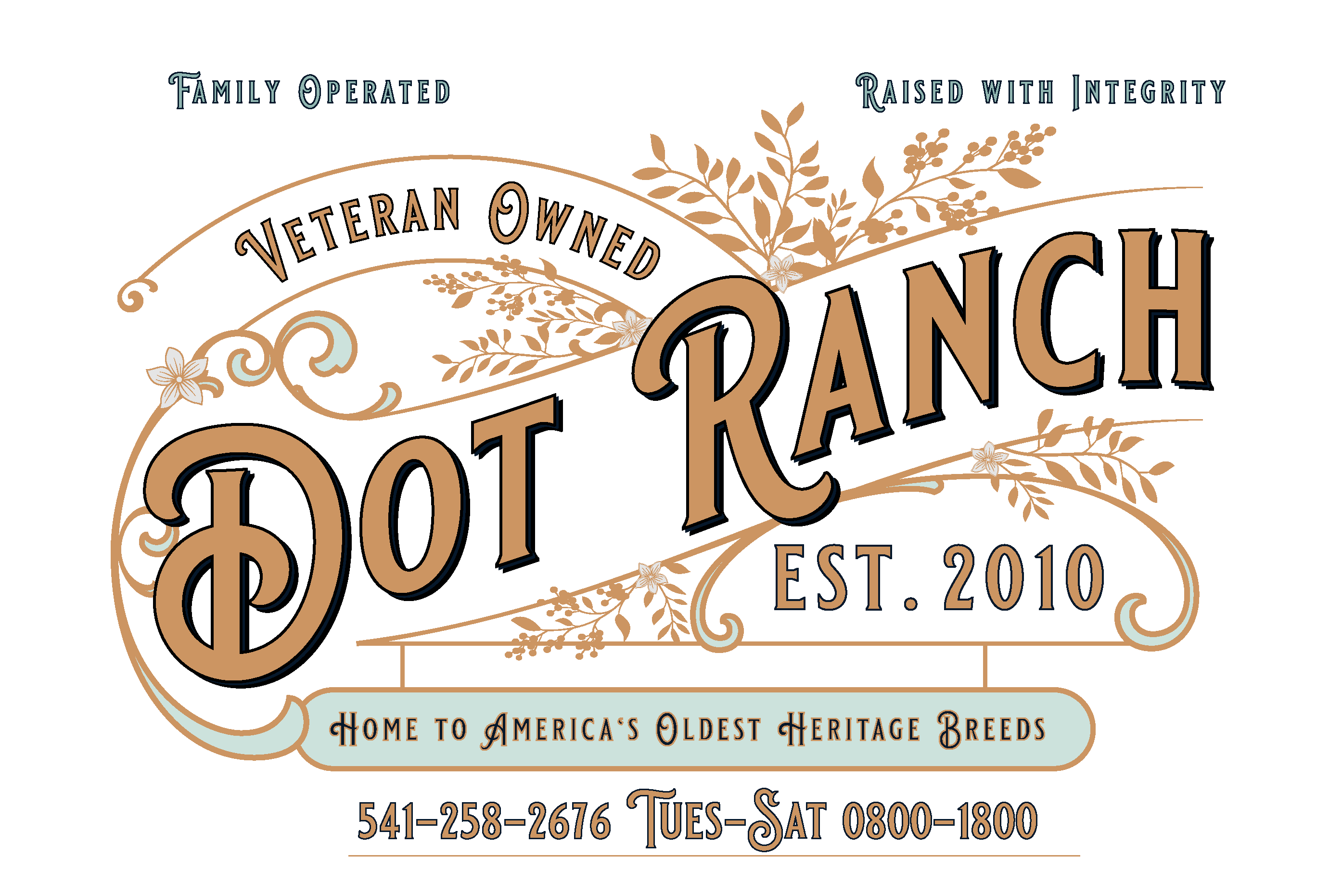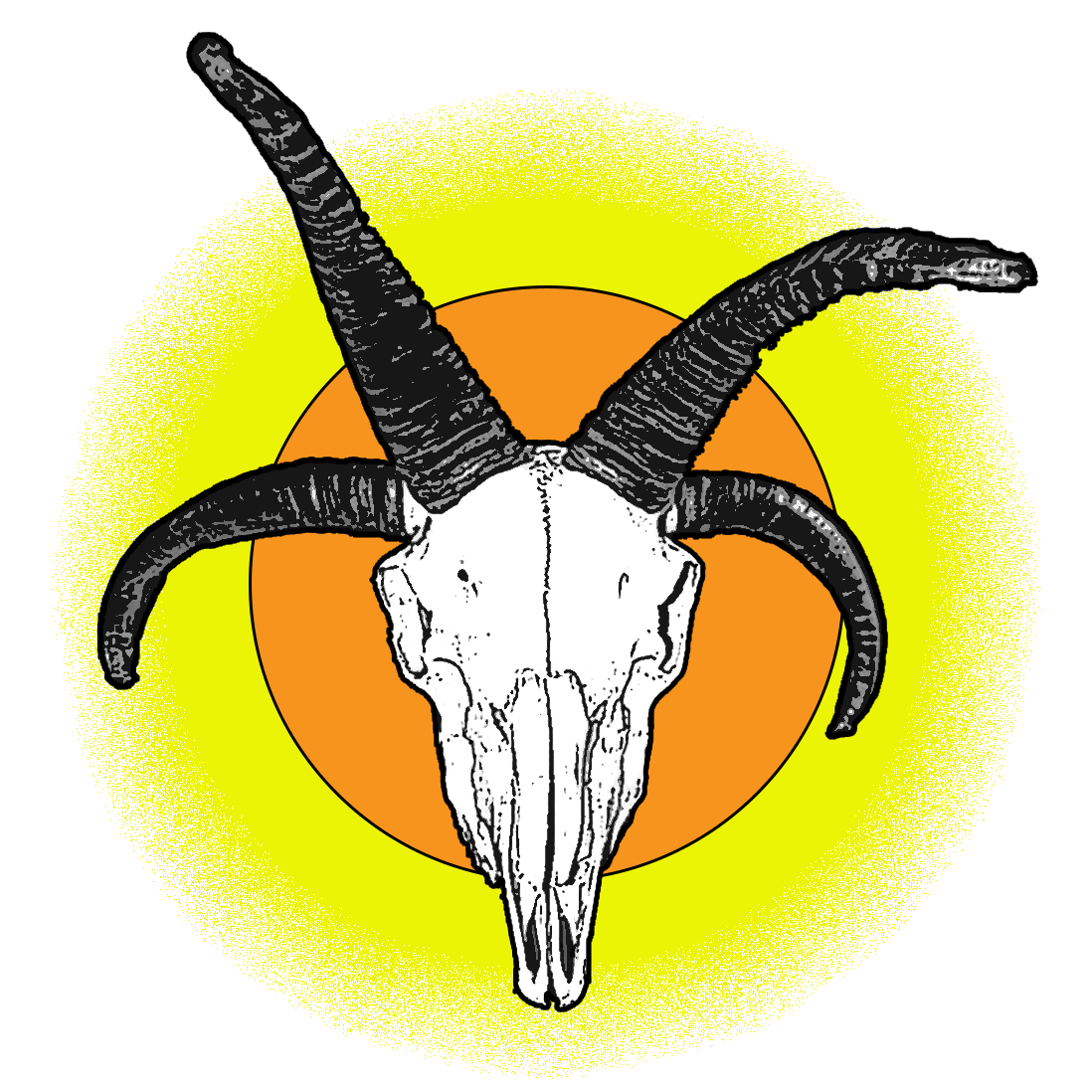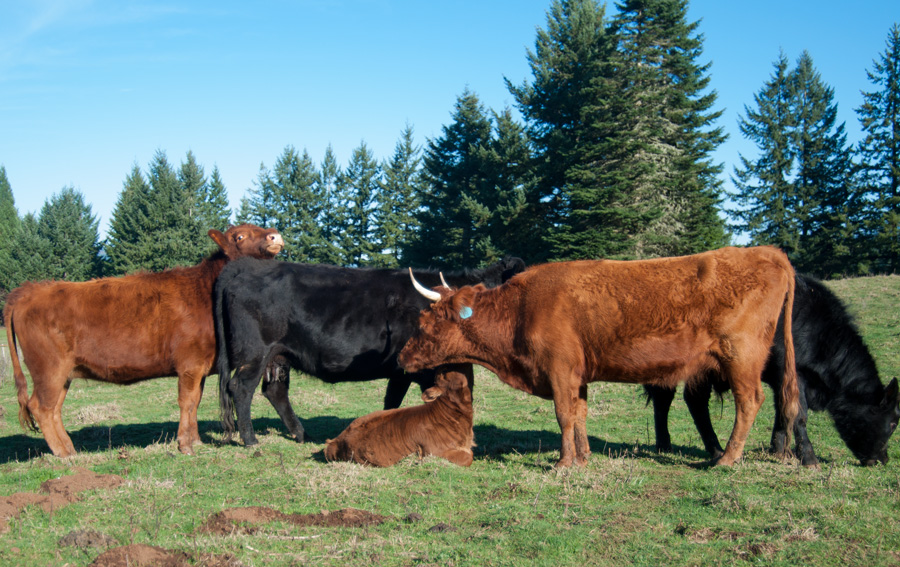
Irish Dexter Cattle
Irish Dexter's are a unique breed of cattle hailing from, as the name suggests, Ireland. First imported into the United States in 1905, their actual history may go all the way back to 800 BC.1
These Iron Age cattle are small in size, with cows usually around 42" at the withers, and bulls at about 46".2 Weights tend to run around 800 lbs for a full grown cow, and up to 1100 lbs for a full grown bull, although in our experience they're usually closer to the 700 lb mark at
harvest time.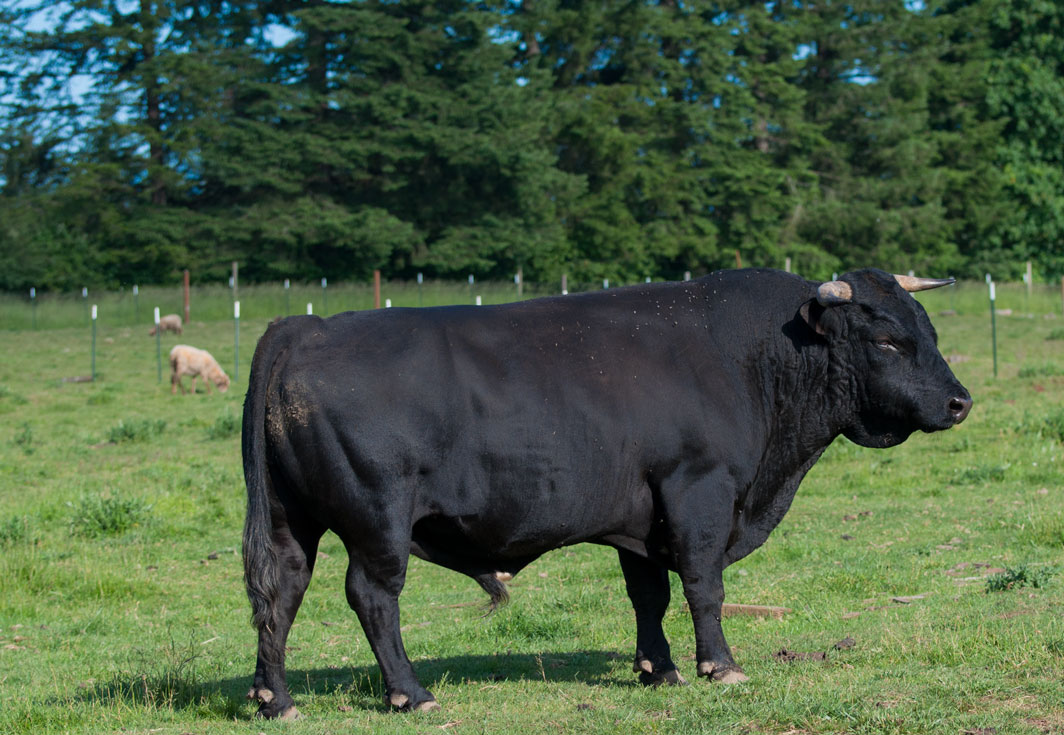 Dexters are good for more than just their hearty and rich meat, they're also excellent milking cattle, producing between 1-3 gallons per day of cream rich milk.
Many an Irish family depended on their Dexters to provide milk on the light forage available, for being a small heritage breed, Dexters are particularly thrifty on land that can't support larger, more modern production bred cattle. With a diverse appearance as well as uses, these cattle can come in black, red, or dun colors, and can be naturally polled or horned. We even occasionally see a scurred cow, like our girl Singing Springs Neba. Bulls tend to have heavier and broader horns, almost similar to a Longhorn, while the cows usually have dramatically arched upright horns with wickedly sharp tips.
Dexters are good for more than just their hearty and rich meat, they're also excellent milking cattle, producing between 1-3 gallons per day of cream rich milk.
Many an Irish family depended on their Dexters to provide milk on the light forage available, for being a small heritage breed, Dexters are particularly thrifty on land that can't support larger, more modern production bred cattle. With a diverse appearance as well as uses, these cattle can come in black, red, or dun colors, and can be naturally polled or horned. We even occasionally see a scurred cow, like our girl Singing Springs Neba. Bulls tend to have heavier and broader horns, almost similar to a Longhorn, while the cows usually have dramatically arched upright horns with wickedly sharp tips.
Like most heritage breeds, Irish Dexters tend to be a good bit cannier and cagier than modern cattle. Some of them can be very sweet, and will make excellent family milk cows or solid small oxen, but you do tend to see more wildcard personalities with the Dexters than with Herefords. 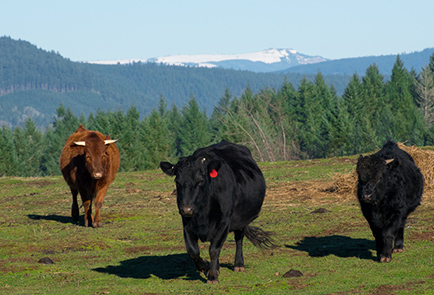 They're remarkably respectful of fences most of the time, but the calves will break out of anything they can shove their head through. Handling facilities for Dexters need to be built to scale, and trying to run them through loading chutes or cattle squeezes meant for full size cattle can lead to real logistics problems. Because Dexters are so short, many people make the mistake of using shorter fencing with them, but they are actually quite agile and young heifers and steers can jump 36" fences when they feel like it. The good news is Dexters readily train to the use of electric fencing, and once they come to respect the wire, they won't test it afterwards unless something is actively panicking them. A regular sized cattle squeeze can be used if you adjust it properly, but often times if it is a cheaper model with fewer adjustments you'll have to build a fake floor to bring the cow up to the height necessary for the squeeze to function correctly. We've seen Dexters get out of regular sized cattle squeezes even with the head gate all the way locked, so it really is a point of concern. Regular built cattle chutes should never be relied on, as younger Dexters can turn part way around in them and then get stuck, causing distress and potentially damage to your cattle. If we could build our cattle handling system again, we would have made it so that the chute was adjustable, allowing for pregnant cows to go through at the widest setting, and for calves at the narrowest.
They're remarkably respectful of fences most of the time, but the calves will break out of anything they can shove their head through. Handling facilities for Dexters need to be built to scale, and trying to run them through loading chutes or cattle squeezes meant for full size cattle can lead to real logistics problems. Because Dexters are so short, many people make the mistake of using shorter fencing with them, but they are actually quite agile and young heifers and steers can jump 36" fences when they feel like it. The good news is Dexters readily train to the use of electric fencing, and once they come to respect the wire, they won't test it afterwards unless something is actively panicking them. A regular sized cattle squeeze can be used if you adjust it properly, but often times if it is a cheaper model with fewer adjustments you'll have to build a fake floor to bring the cow up to the height necessary for the squeeze to function correctly. We've seen Dexters get out of regular sized cattle squeezes even with the head gate all the way locked, so it really is a point of concern. Regular built cattle chutes should never be relied on, as younger Dexters can turn part way around in them and then get stuck, causing distress and potentially damage to your cattle. If we could build our cattle handling system again, we would have made it so that the chute was adjustable, allowing for pregnant cows to go through at the widest setting, and for calves at the narrowest.
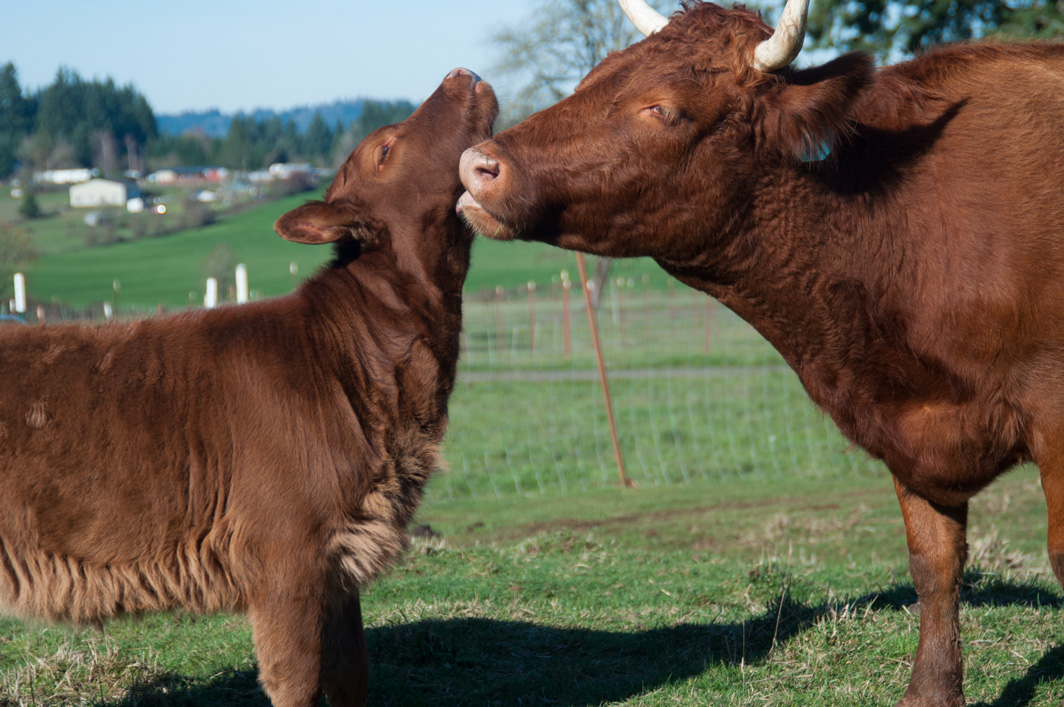 Irish Dexters make excellent mothers, and will often nurse their last calf well into their pregnancy with the next. When allowed to wean naturally, the calves usually separate at about 10 months, but we've seen a few that continued to nurse all the way to 14 months. Easy calvers, it's rare that an Irish Dexter needs assistance with the calving process, but attention is still due at that time of year. First time moms, like with any cattle, tend to be hit and miss on mothering, and require supervision to ensure that they're bonding properly with the calf, and not being too rough on it. At times, you may need to hobble the mother and tie her head or place her in a stanchion, so it's best to halter train your Dexters while they're young. Once they've figured it out though, there is no mother so attentive, loving, or fierce in defense of her calf as an Irish Dexter. In a herd, the cows will take turns watching over the calves and eating, and if a predator approaches, the cows are quick to run it off, even resorting to goring and stomping the potential danger to their calves. Despite their small size, Dexters have mighty tempers, and they do still weigh nearly a half ton.
Irish Dexters make excellent mothers, and will often nurse their last calf well into their pregnancy with the next. When allowed to wean naturally, the calves usually separate at about 10 months, but we've seen a few that continued to nurse all the way to 14 months. Easy calvers, it's rare that an Irish Dexter needs assistance with the calving process, but attention is still due at that time of year. First time moms, like with any cattle, tend to be hit and miss on mothering, and require supervision to ensure that they're bonding properly with the calf, and not being too rough on it. At times, you may need to hobble the mother and tie her head or place her in a stanchion, so it's best to halter train your Dexters while they're young. Once they've figured it out though, there is no mother so attentive, loving, or fierce in defense of her calf as an Irish Dexter. In a herd, the cows will take turns watching over the calves and eating, and if a predator approaches, the cows are quick to run it off, even resorting to goring and stomping the potential danger to their calves. Despite their small size, Dexters have mighty tempers, and they do still weigh nearly a half ton.
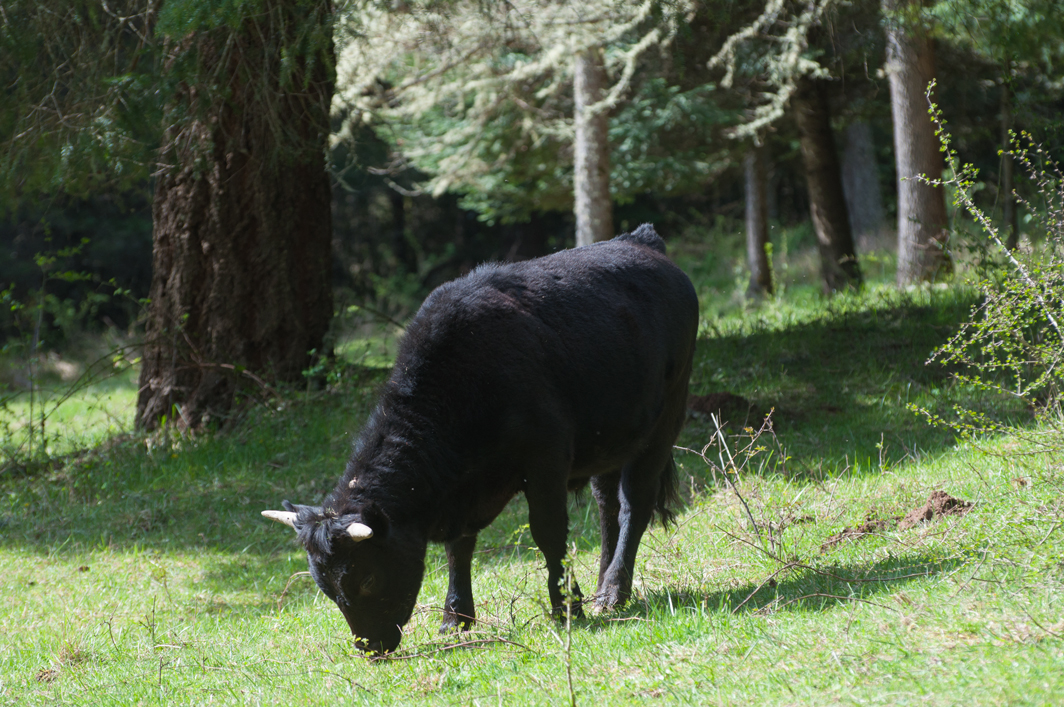 After 6 years of raising Irish Dexter Cattle and Navajo-Churro Sheep on the same pastures, we've finally come to terms with the fact that the two just don't mix as well as we'd hoped for. While they do graze in complimentary fashions, with cows prefering grass and sheep preferring to browse, the difficulties of keeping cows from stomping lambs have proven that at the very least, they need to be kept separate during lambing and calving season. Even when raised with sheep, some Dexters can become very aggressive towards any animal they perceive as a threat or competition, and we have had sheep get killed after being kicked in the head or stomped on. Dexter calves and adolescent steers are particularly hard on them, not out of maliciousness but just a sheer exuberance and a lack of understanding that a 600lb steer bouncing around and kicking up with a 40 lb lamb has a very small margin of error. This can be overcome with careful juggling and management, but for a homestead with limited land, or for a smaller ranch that relies on sacrifice pasture during certain times of year, the combination of cattle and sheep in a small footprint just costs too much in supervision, time, and handling. Dexters are wonderful animals, hardy and canny, and greatly suited to the small farm or ranch, but they may not be a great fit for everybody.
After 6 years of raising Irish Dexter Cattle and Navajo-Churro Sheep on the same pastures, we've finally come to terms with the fact that the two just don't mix as well as we'd hoped for. While they do graze in complimentary fashions, with cows prefering grass and sheep preferring to browse, the difficulties of keeping cows from stomping lambs have proven that at the very least, they need to be kept separate during lambing and calving season. Even when raised with sheep, some Dexters can become very aggressive towards any animal they perceive as a threat or competition, and we have had sheep get killed after being kicked in the head or stomped on. Dexter calves and adolescent steers are particularly hard on them, not out of maliciousness but just a sheer exuberance and a lack of understanding that a 600lb steer bouncing around and kicking up with a 40 lb lamb has a very small margin of error. This can be overcome with careful juggling and management, but for a homestead with limited land, or for a smaller ranch that relies on sacrifice pasture during certain times of year, the combination of cattle and sheep in a small footprint just costs too much in supervision, time, and handling. Dexters are wonderful animals, hardy and canny, and greatly suited to the small farm or ranch, but they may not be a great fit for everybody.
As of 2017, Dot Ranch will no longer sell Irish Dexter calves.
Citations
1 Ekarius, C. (2008). Storey's Illustrated Breed Guide to Sheep, Goats, Cattle, and Pigs. North Adams, MA: Storey Publishing.
2 American Dexter Cattle Association
